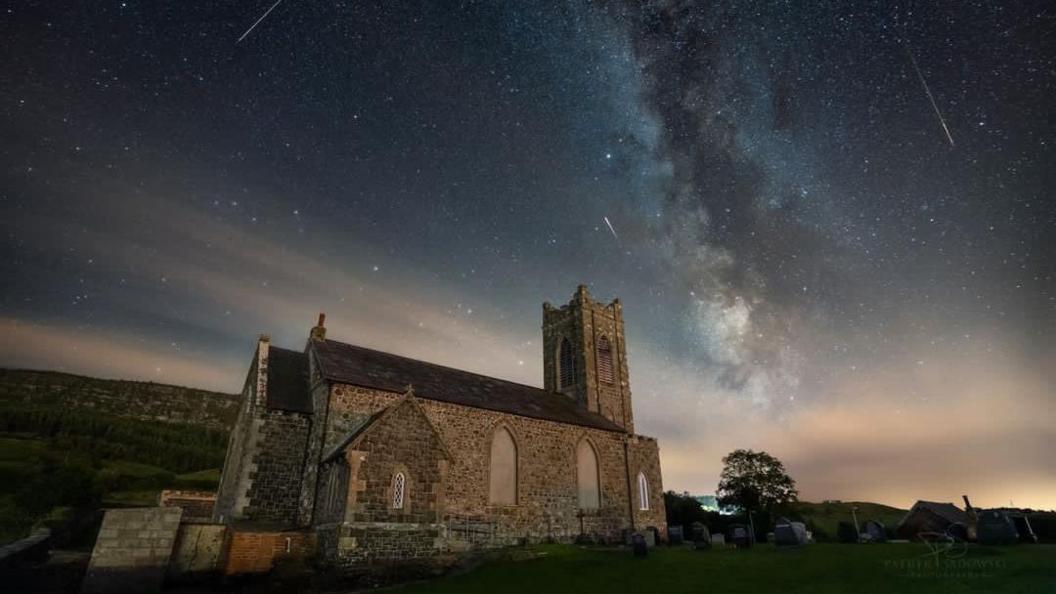Draconids meteor shower to peak on Tuesday night

- Published
The annual Draconid meteor shower is visible this year until 10 October in the northern hemisphere and will peak on the evening of 8 October.
The meteors, which are sometimes referred to as shooting stars, will appear as streaks of light in the evening sky.
Meteor showers occur when the Earth passes through the debris of a comet or an asteroid. The debris, usually bits of rock or ice, hit the Earth's atmosphere and burns up because of the friction, sending light streaks across the night sky.
The point in the sky from which the meteors appear to originate is known as the radiant and the quality of the display is measured by how many meteors are visible every hour - known as the zenithal hourly rate.
That rate varies year by year. In 2024 it could be a fairly unimpressive five, but the better news is that our skies will be reasonably dark with a first quarter moon which will set early on in the evening.
The Draconid meteors come from the debris of Comet 21P/Giacobini-Zinner, with the radiant in the constellation of Draco (hence the name).
Will the skies be clear?
The biggest obstacle to a spectacular night of meteor gazing is, of course, cloud, and there could be plenty of it on the evening of 8 October.
Low pressure to the west of Ireland will be sinking southwards, bringing swirls of showers and longer spells of rain, but there could be some clearer spells at times especially across parts of south-west England, south Wales and possibly north-west Scotland.
Although not the peak, Wednesday night could be more favourable weather-wise with more widespread clear spells after sunset across the far south of the UK. Across the north-west of Scotland conditions will improve too with drier, less moist air filtering down on a cold northerly wind.
You can check your local forecast here or on the 大象传媒 Weather app.
How do I watch the Draconids?
Weather permitting, the Draconids will be best viewed in the evening, when the constellation of Draco is high in the northern sky.
Find a dark spot away from city lights and allow your eyes around 15 minutes to adjust to the dark. Look to the north - you won't need binoculars or a telescope as the shower will be visible to the naked eye.
And if you miss it? Well, there is not long to wait until the next shower - the Orionids are set to grace our skies on 21 and 22 October.
And who knows? The weather may even co-operate.
What can be seen in the October night sky?